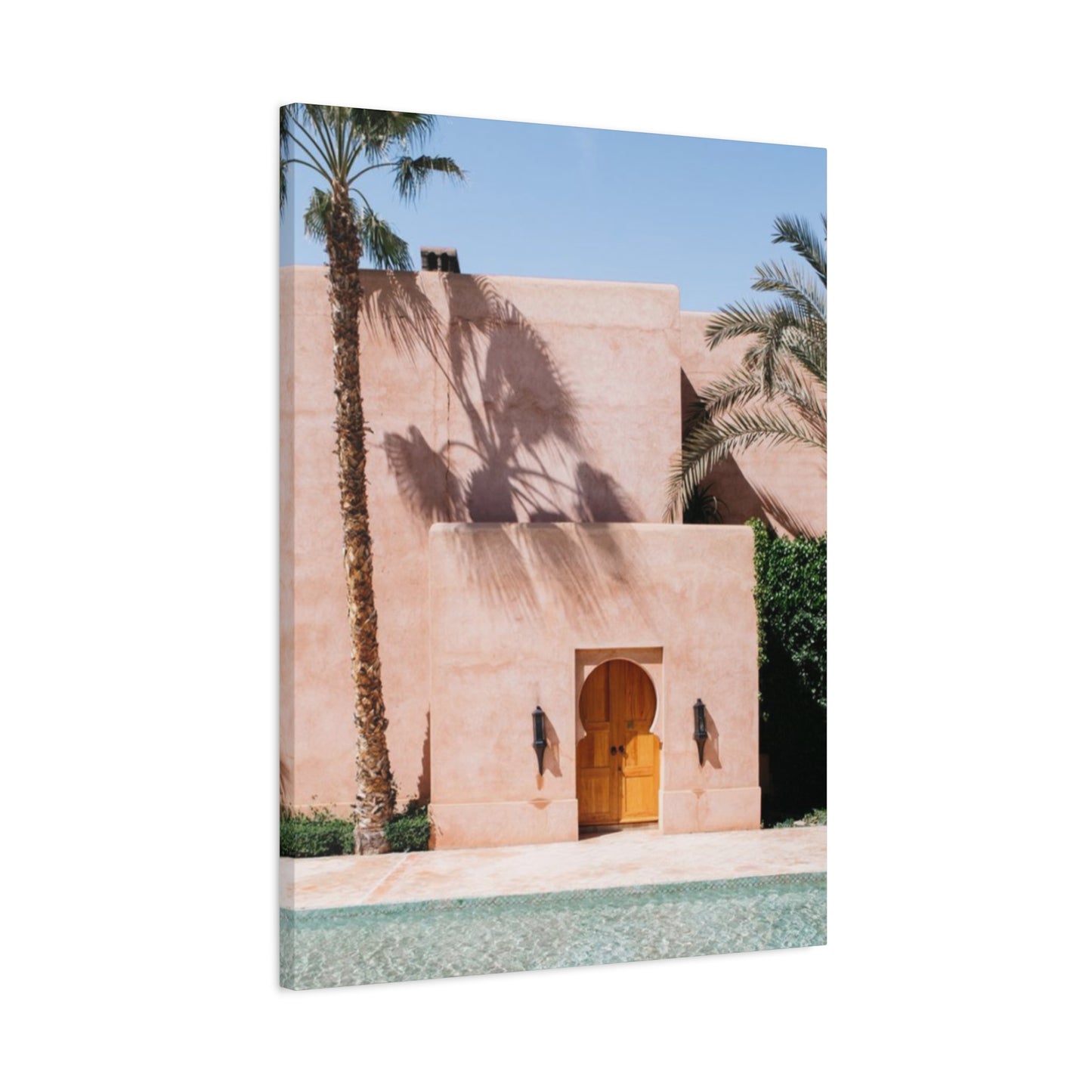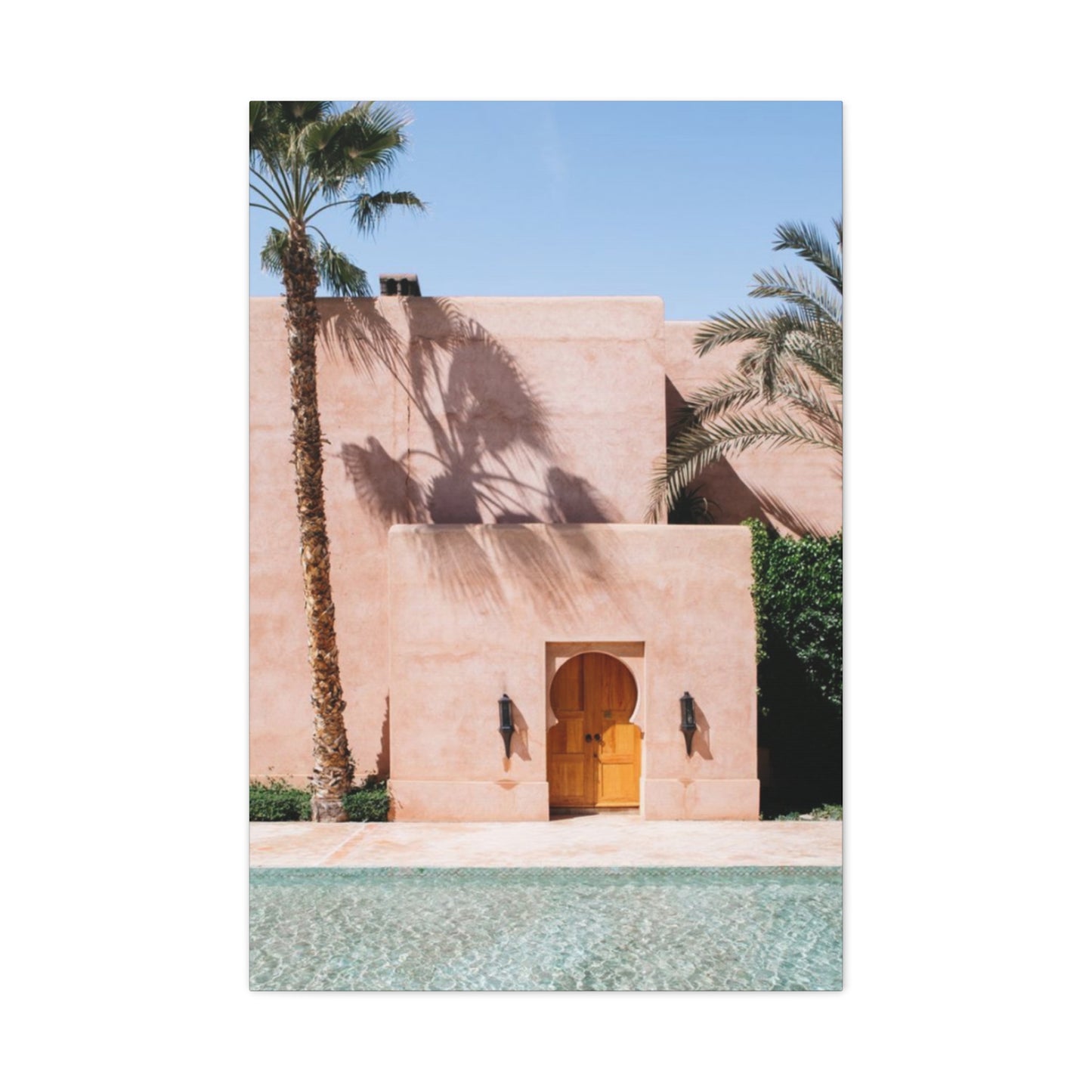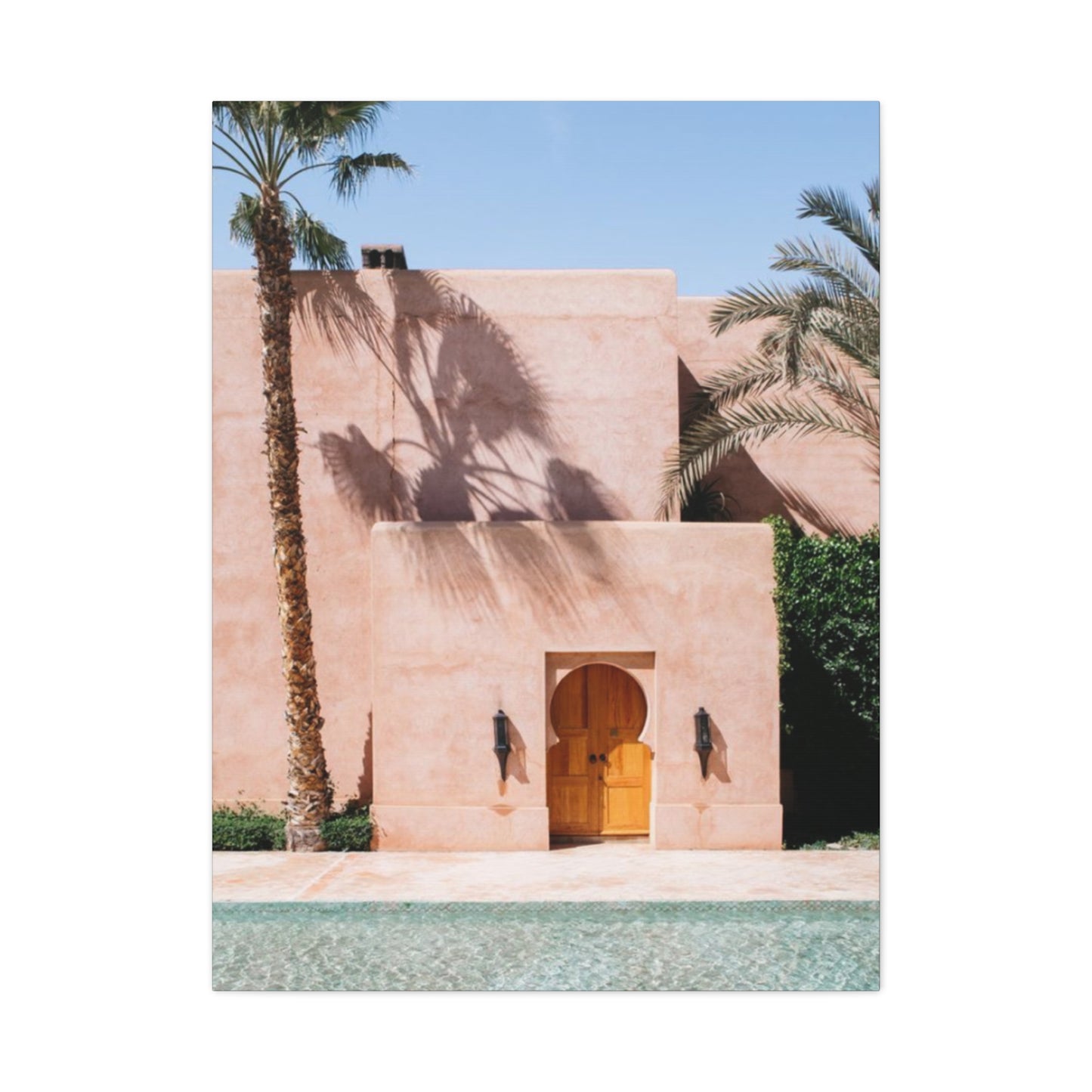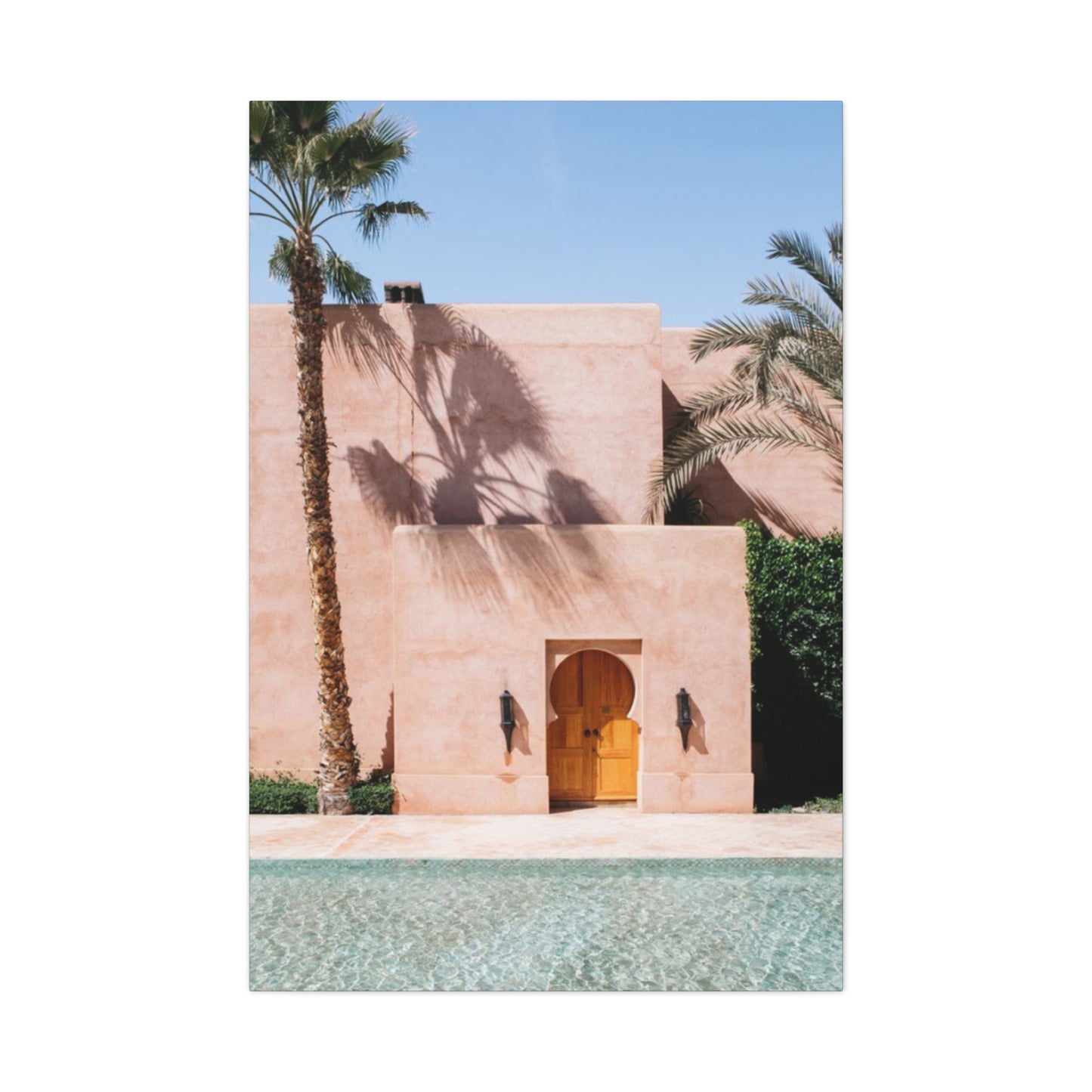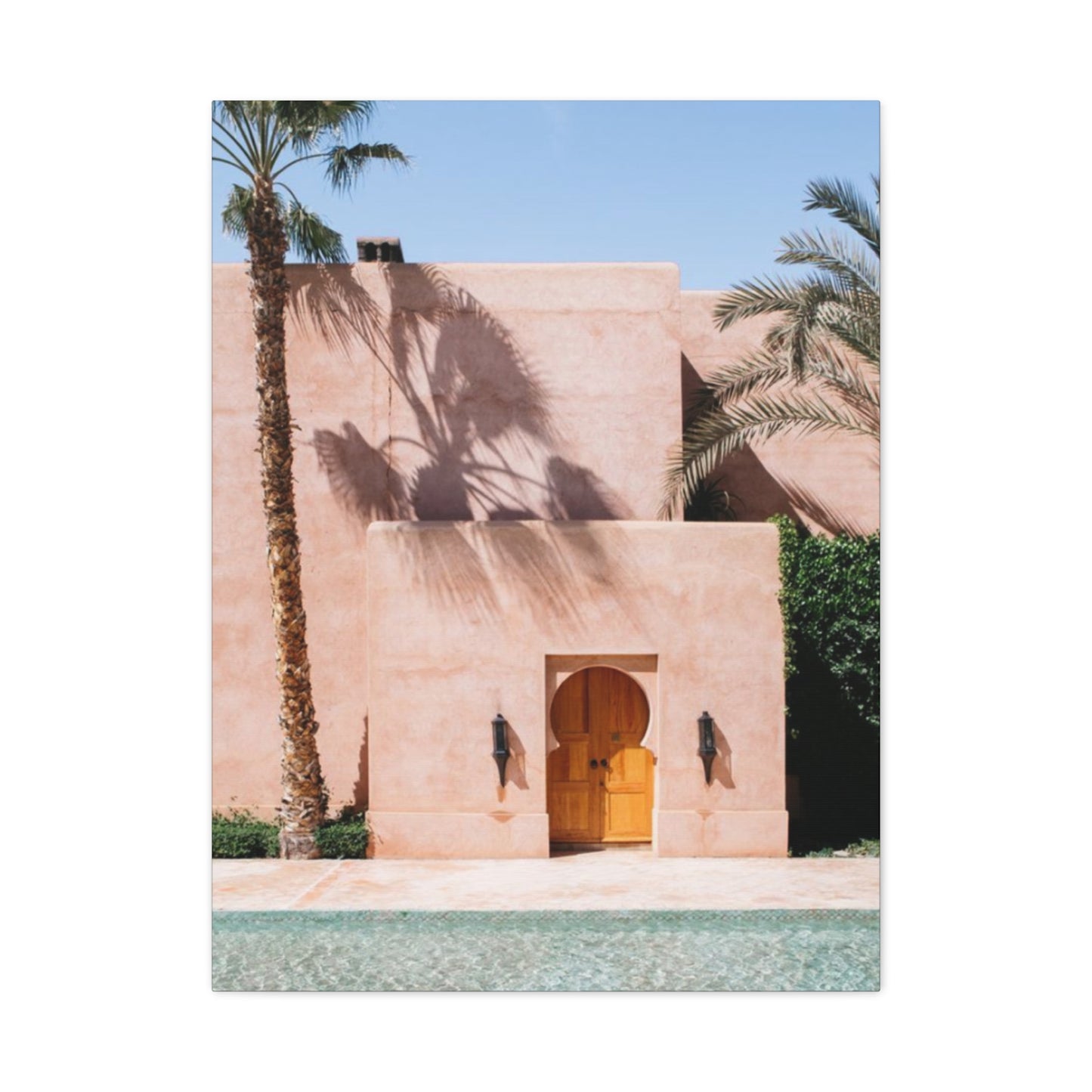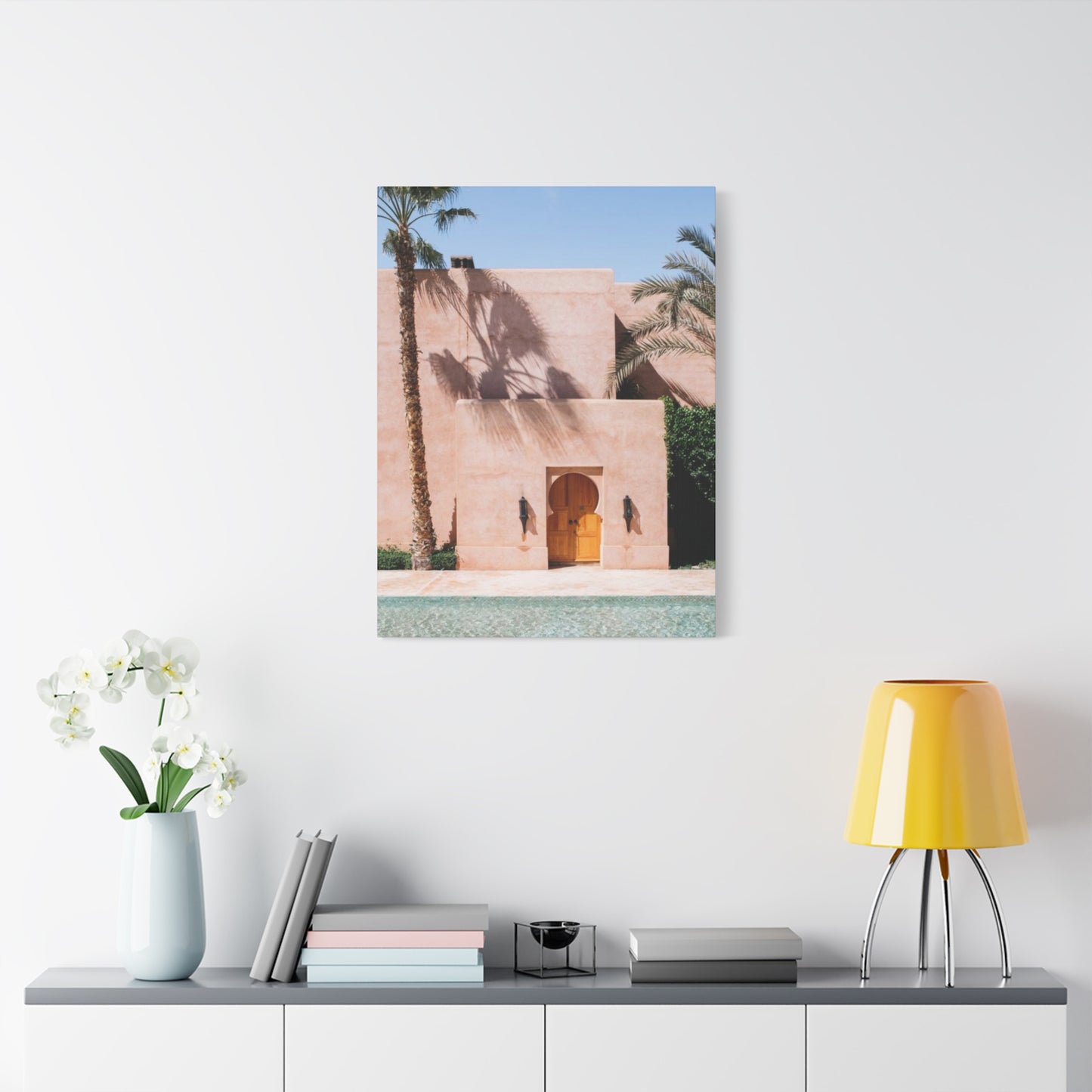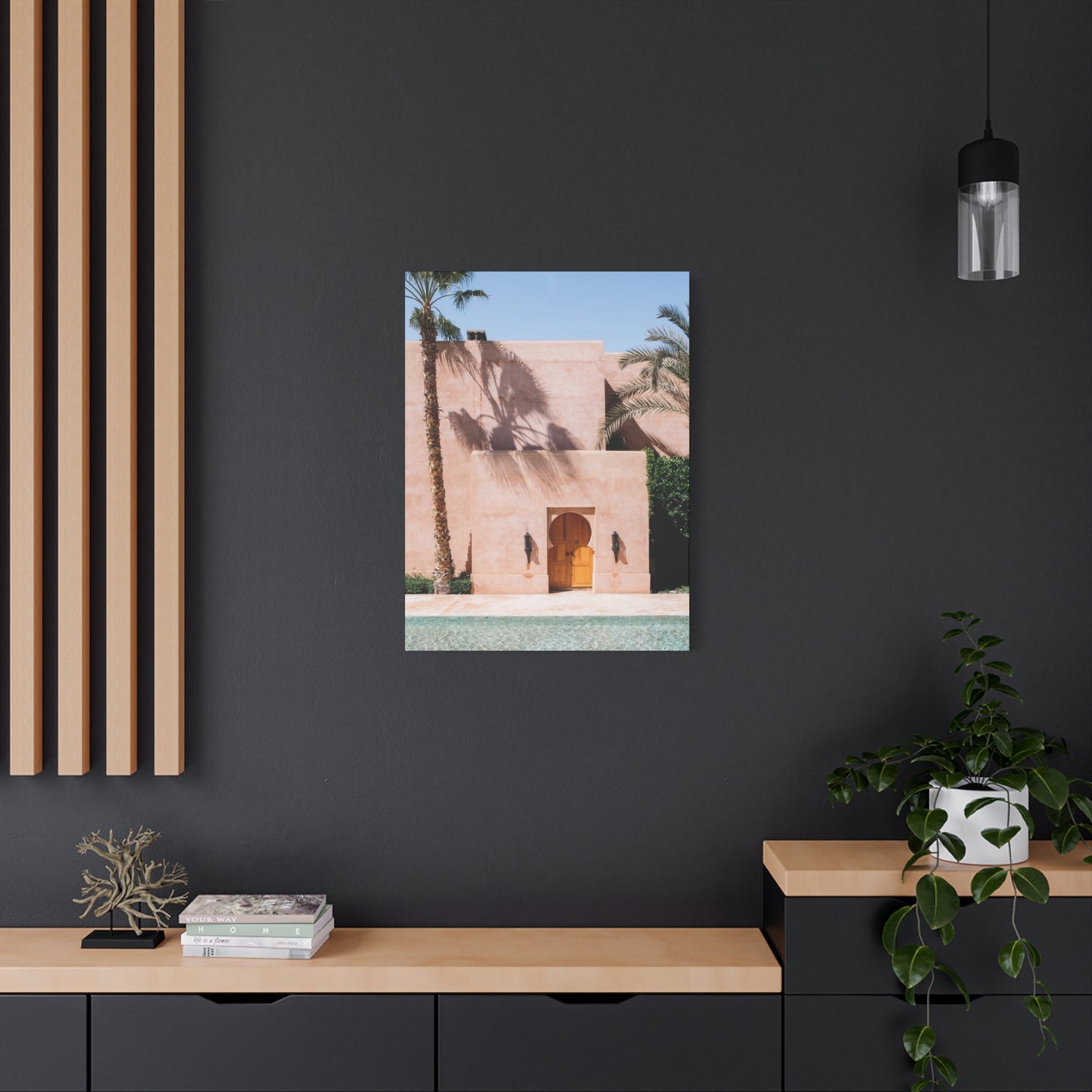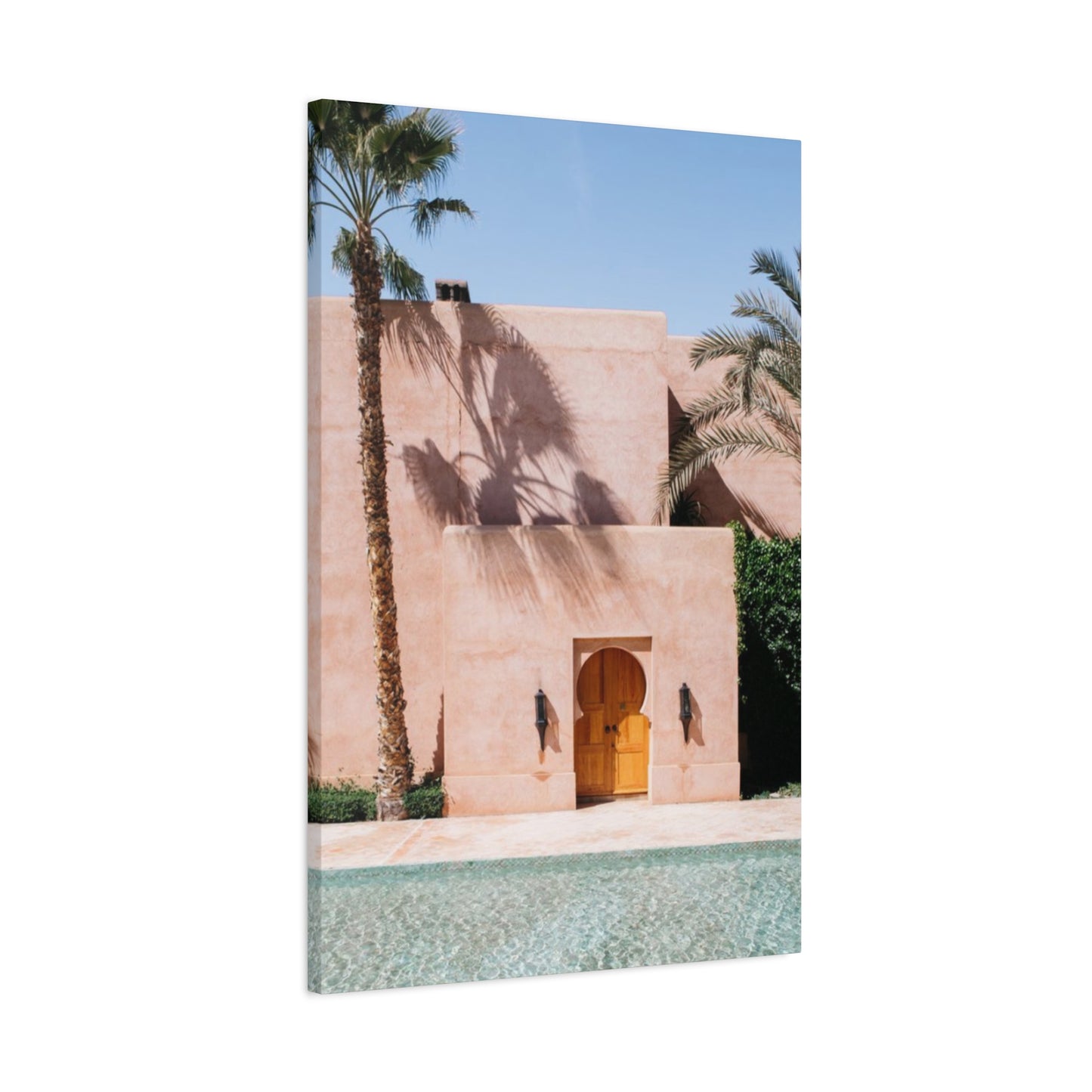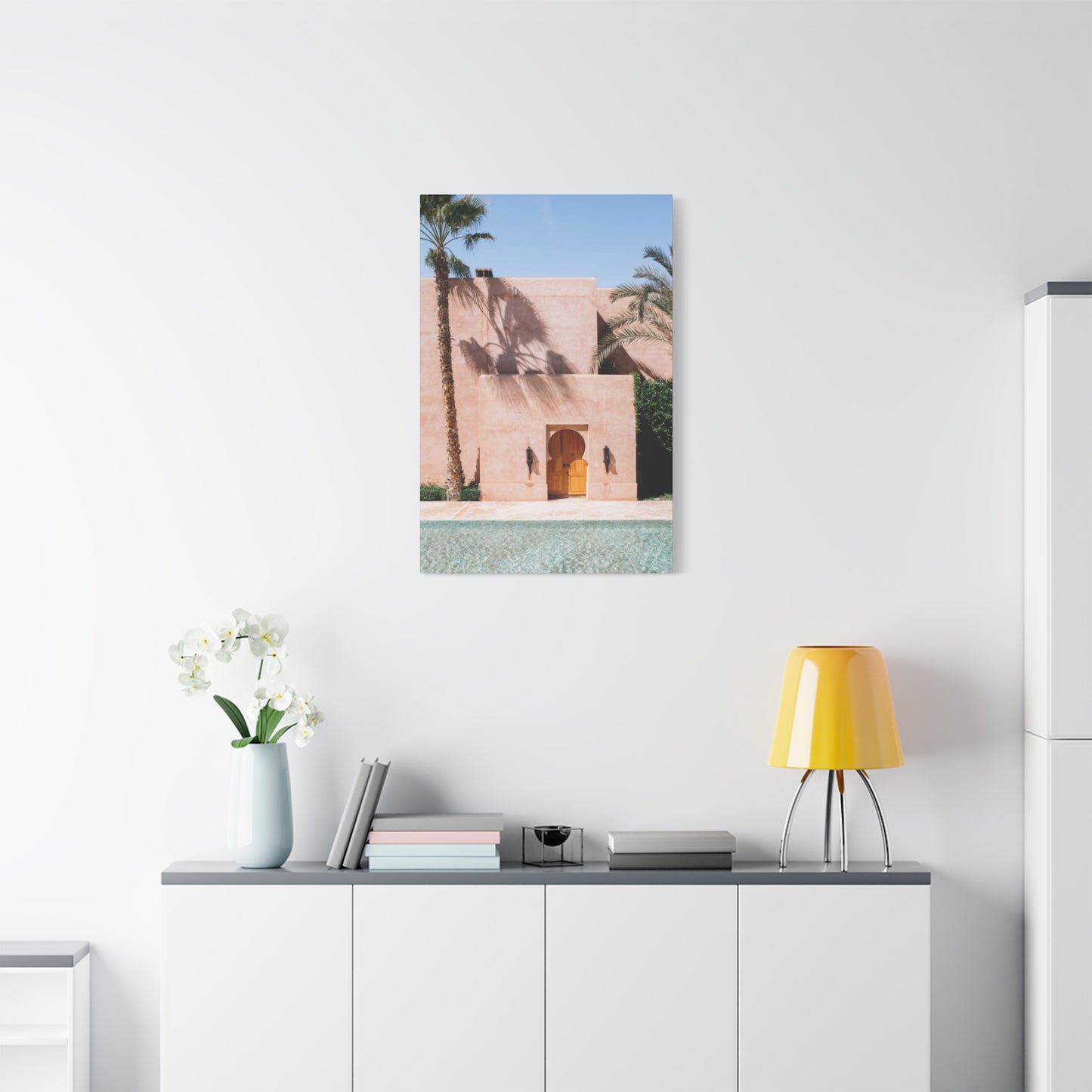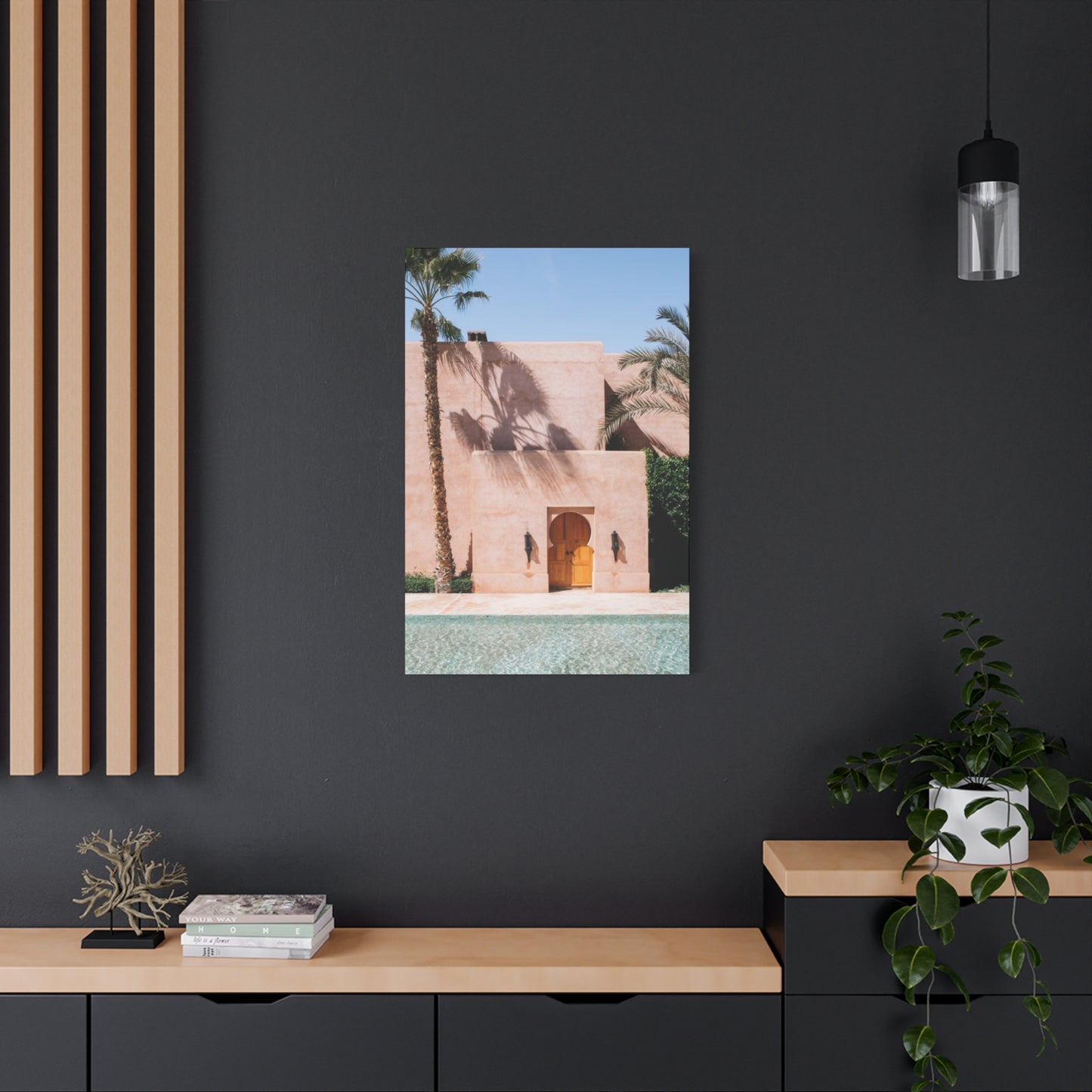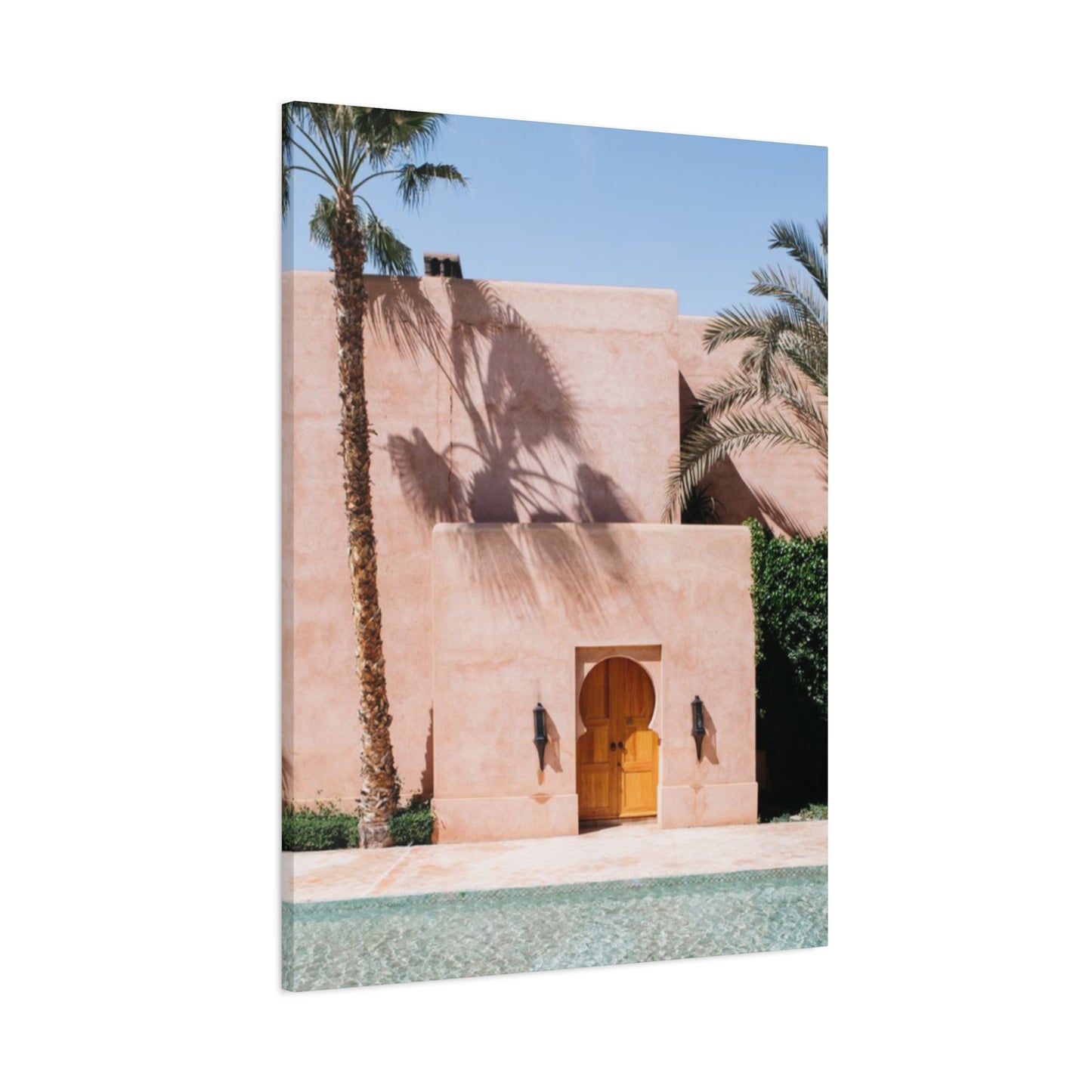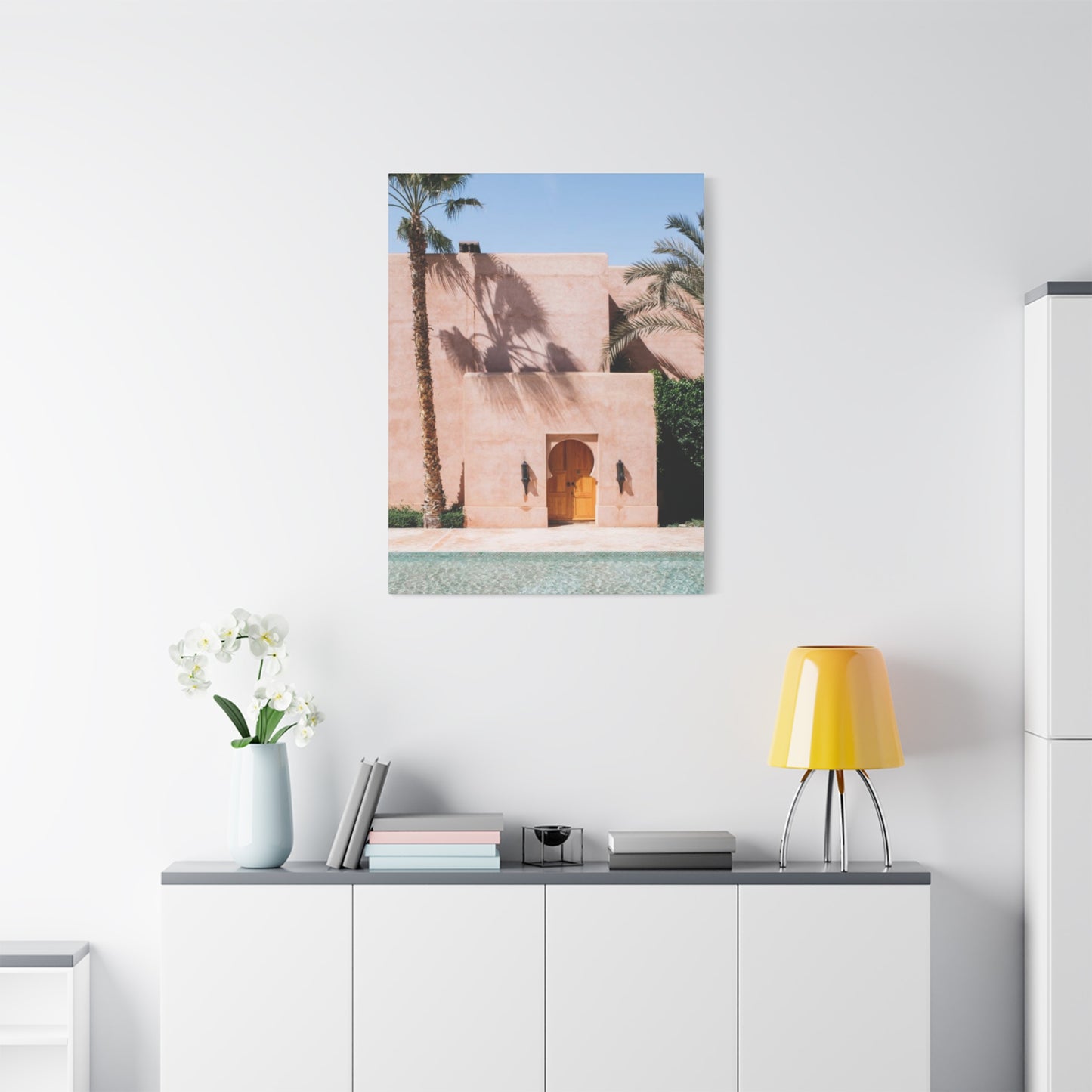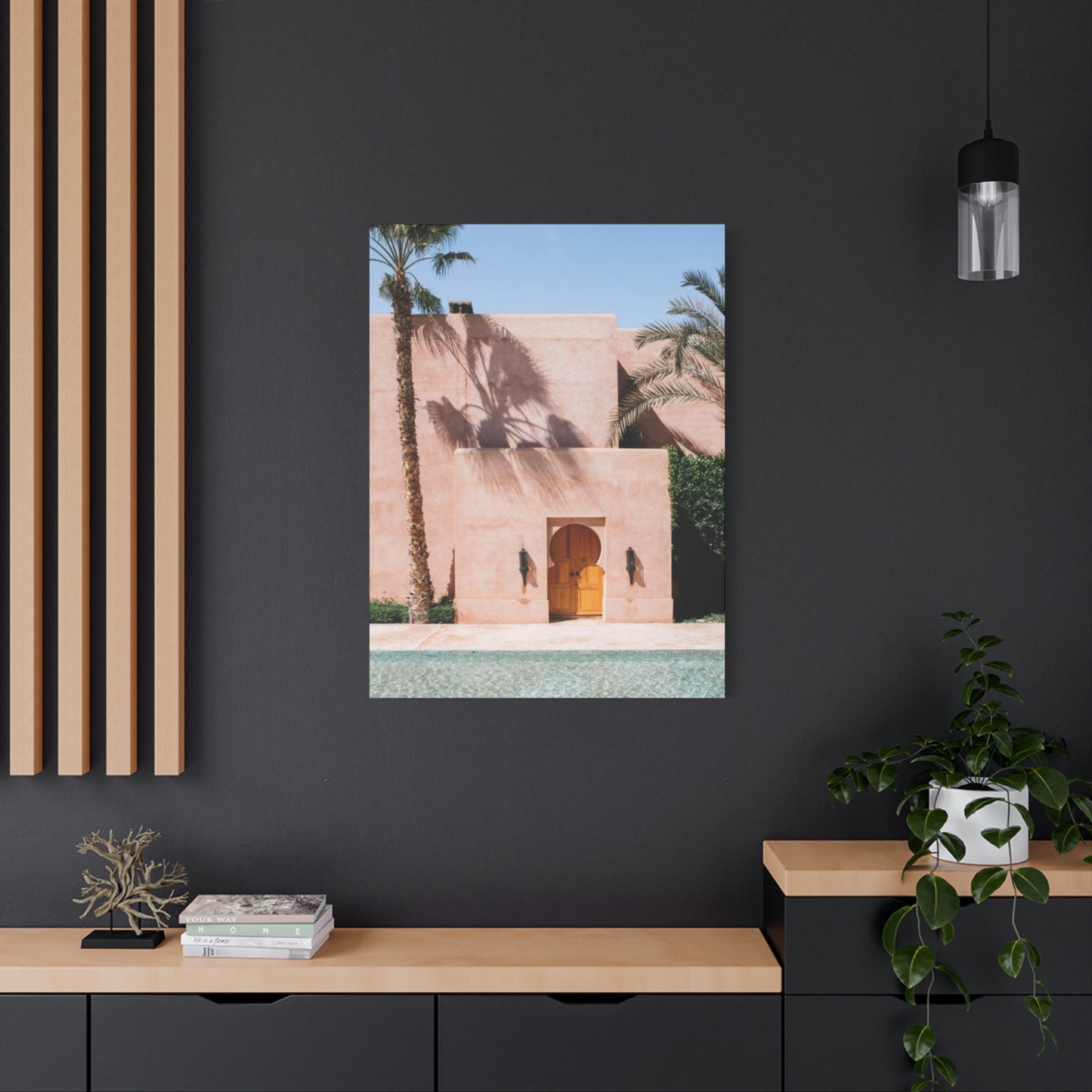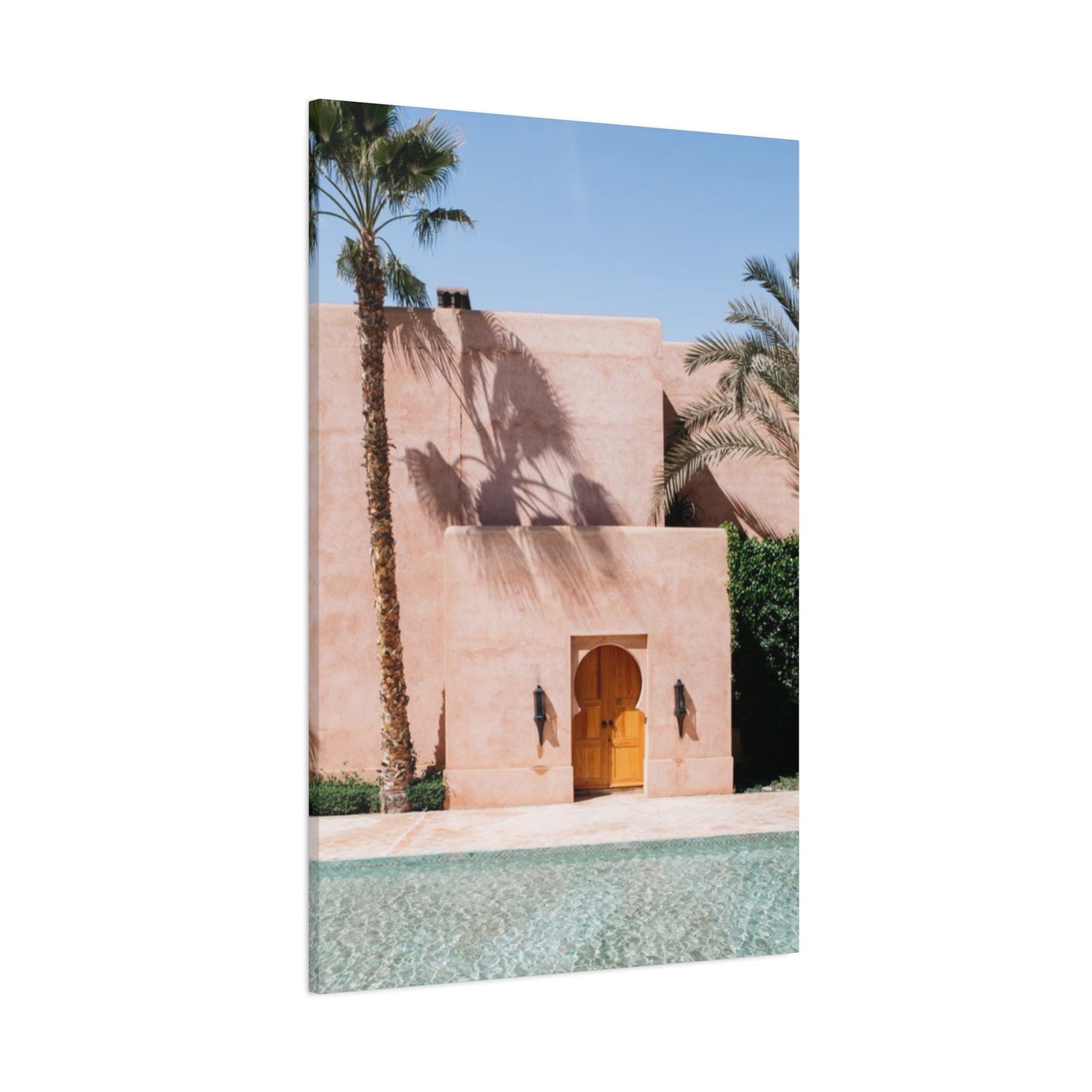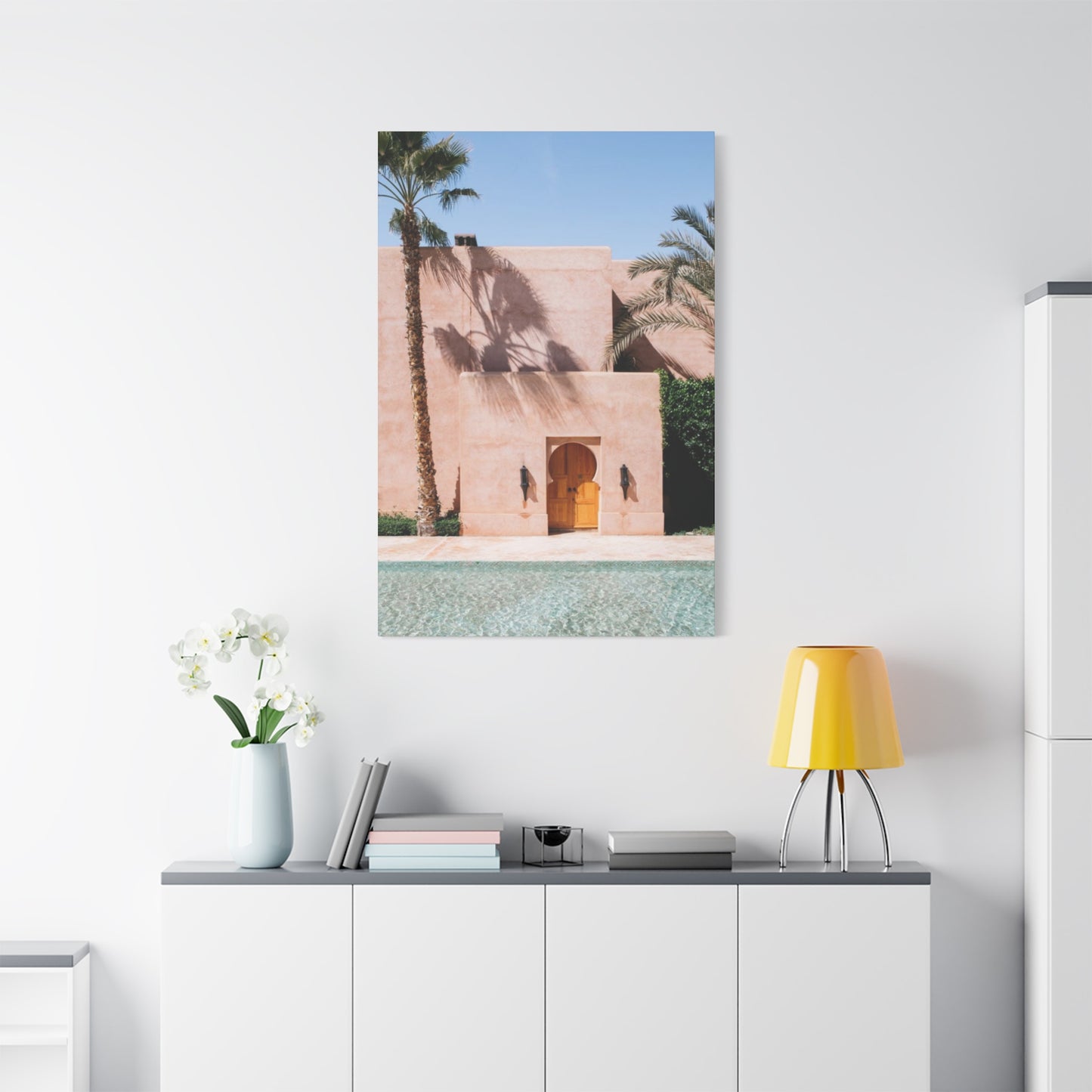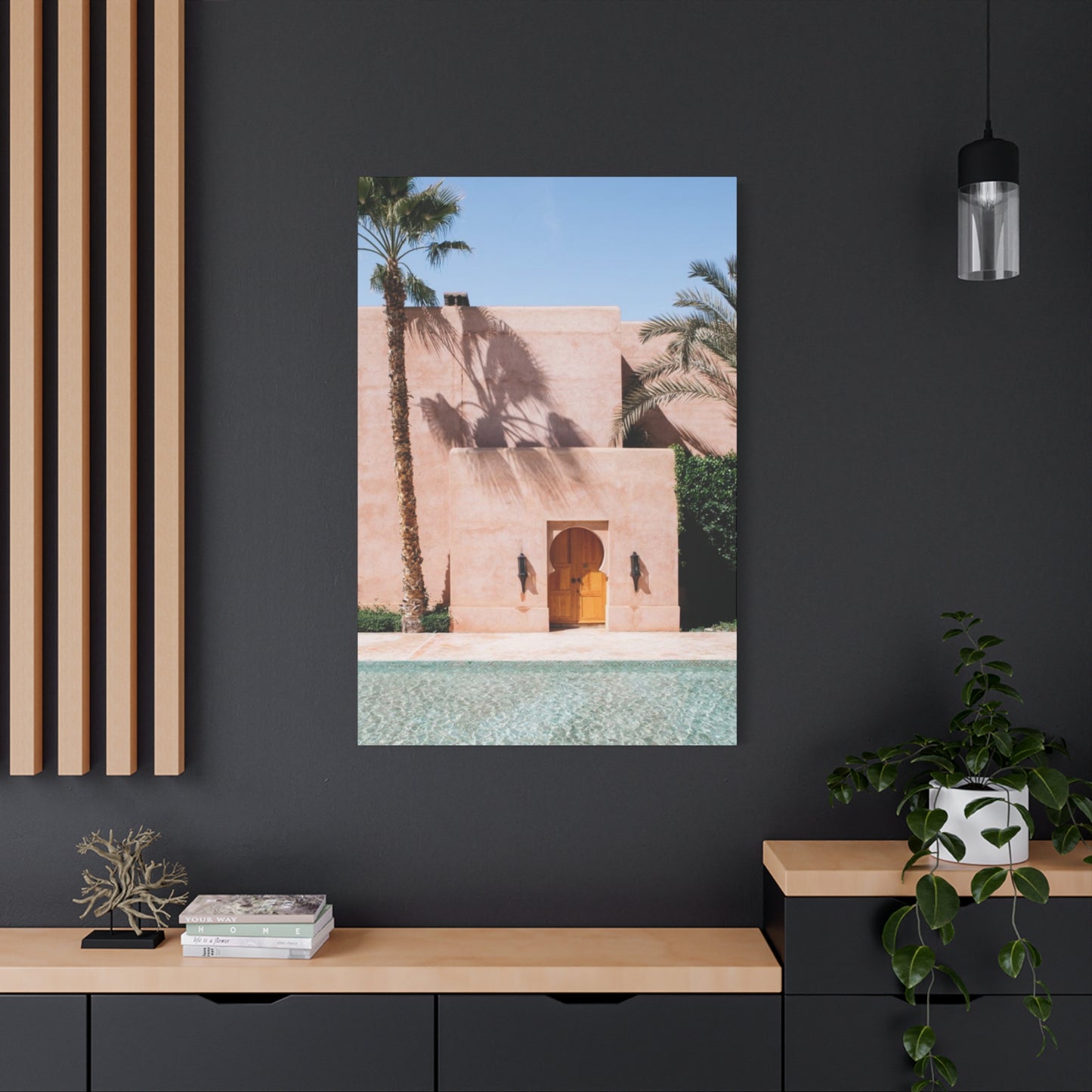Moroccan Wall Art Canvas Prints: Bringing Sunshine Architecture Into Modern Homes
Moroccan artistic traditions represent one of the most captivating cultural expressions in the world, deeply rooted in centuries of Islamic, Berber, and Andalusian influences. The architectural magnificence of Morocco has long been celebrated for its intricate geometric patterns, vibrant colors, and symbolic meanings that transcend mere decoration. When these timeless designs are transformed into canvas prints, they bring the essence of North African sunshine and architectural brilliance directly into contemporary living environments.
The artistry found in Moroccan culture encompasses a rich tapestry of visual elements that have evolved over thousands of years. From the ancient Berber symbols carved into mountain caves to the sophisticated geometric patterns adorning royal palaces, each design carries profound cultural significance. These artistic expressions reflect the mathematical precision of Islamic art, where geometry serves not only aesthetic purposes but also spiritual contemplation. The interplay of light and shadow, characteristic of Moroccan architecture, creates dynamic visual experiences that change throughout the day, much like how quality canvas prints can transform a room's atmosphere.
Moroccan artists have traditionally worked with various mediums, including ceramics, textiles, metalwork, and architectural ornamentation. However, the translation of these designs onto canvas allows for unprecedented accessibility and versatility in home decoration. The durability of modern printing techniques ensures that the vibrant colors and intricate details of traditional Moroccan art remain vivid for years, bringing lasting beauty to any environment.
The cultural significance of Moroccan patterns extends beyond mere aesthetic appeal. Each geometric form, color combination, and motif carries symbolic meaning rooted in Islamic philosophy and Berber traditions. Stars represent divine guidance, geometric interlacing symbolizes the infinite nature of Allah, and floral patterns reflect the paradise described in Islamic texts. When homeowners choose Moroccan canvas prints, they're not simply selecting decorative items but embracing a rich cultural heritage that adds depth and meaning to their living environments.
Historical Evolution of Moroccan Decorative Arts
The development of Moroccan decorative arts spans over a millennium, beginning with the arrival of Islam in the 7th century and continuing through various dynastic periods that each contributed unique elements to the artistic vocabulary. The Almoravid dynasty (1040-1147) established the foundation for geometric abstraction in Moroccan art, while the Almohad period (1121-1269) refined these concepts into more sophisticated patterns. The Marinid dynasty (1244-1465) introduced new levels of complexity in geometric design, creating the intricate patterns that continue to inspire modern canvas prints today.
During the Nasrid period in neighboring Al-Andalus, Moroccan artists perfected the art of combining geometric patterns with arabesque designs, creating the sophisticated visual language that characterizes authentic Moroccan aesthetics. The fall of Granada in 1492 brought Andalusian craftsmen to Morocco, further enriching the artistic traditions with refined techniques and innovative design concepts. This cross-cultural pollination resulted in the distinctive Moroccan style that seamlessly blends mathematical precision with organic beauty.
The Saadian renaissance (1549-1659) marked a golden age for Moroccan decorative arts, during which architectural masterpieces like the Saadian Tombs and El Badi Palace showcased the pinnacle of artistic achievement. The geometric patterns created during this period demonstrate an extraordinary understanding of mathematical principles, with designs based on complex polygonal systems that create mesmerizing visual effects. These historical patterns serve as the primary inspiration for contemporary Moroccan canvas prints, ensuring authenticity while adapting to modern printing technologies.
The Alaouite dynasty, which continues to rule Morocco today, has maintained and preserved these artistic traditions while allowing for contemporary interpretations. Modern Moroccan artists draw from this rich heritage while incorporating contemporary techniques and materials, creating works that honor tradition while speaking to modern sensibilities. This evolution makes Moroccan canvas prints particularly appealing to contemporary homeowners who appreciate both historical significance and modern convenience.
Traditional Moroccan Color Palettes and Their Meanings
The color palette of traditional Moroccan art reflects both the natural environment of North Africa and the symbolic associations found in Islamic culture. Earth tones predominate, with ochre, terracotta, and burnt sienna representing the desert landscapes and clay architecture that characterize much of Morocco. These warm hues create a sense of grounding and stability, making them particularly effective in canvas prints designed for living rooms and bedrooms.
Blue holds special significance in Moroccan culture, representing protection against the evil eye and symbolizing infinity and spiritual transcendence. The various shades of blue found in Moroccan art, from deep cobalt to subtle powder blue, create cooling contrasts to the warm earth tones. When incorporated into canvas prints, blue elements can create focal points that draw the eye and add depth to room compositions. The famous blue city of Chefchaouen has inspired countless artistic interpretations, with its distinctive azure walls providing endless inspiration for contemporary canvas designs.
Green, associated with Islam and paradise, appears frequently in Moroccan decorative arts, often in the form of stylized plant motifs and geometric patterns. The various shades of green, from emerald to sage, complement both warm and cool color schemes, making green-toned Moroccan canvas prints versatile choices for diverse home decorating styles. The use of green in traditional Moroccan art often represents hope, renewal, and the promise of paradise, adding positive psychological associations to modern home environments.
Gold and metallic accents have always played important roles in Moroccan decorative arts, representing divine light and spiritual illumination. Traditional craftsmen used gold leaf and metallic pigments to highlight important design elements and create luminous effects that change with lighting conditions. Modern canvas printing techniques can replicate these metallic effects, creating prints that shift and shimmer as viewing angles change, bringing dynamic visual interest to contemporary homes.
Red and its variations, including burgundy and crimson, represent strength, passion, and celebration in Moroccan culture. These powerful colors appear in traditional textiles, architectural elements, and decorative objects, often serving as accent colors that energize neutral palettes. Moroccan canvas prints incorporating red elements can serve as bold statement pieces that anchor room designs and create dramatic focal points.
Geometric Patterns in Moroccan Art: Mathematics Meets Spirituality
The geometric patterns that define Moroccan decorative arts represent one of humanity's most sophisticated applications of mathematical principles to artistic expression. These patterns, based on complex polygonal systems, create infinite tessellations that symbolize the infinite nature of divine creation. The mathematical precision required to create these patterns demonstrates the high level of education and artistic skill present in historical Moroccan society.
The fundamental building blocks of Moroccan geometric patterns include the square, hexagon, octagon, and various star polygons, each carrying specific symbolic meanings. The eight-pointed star, or khatam, represents regeneration and renewal, while the sixteen-pointed star symbolizes the breath of the Compassionate. These patterns can be expanded infinitely in all directions, creating the sense of boundless continuation that characterizes authentic Moroccan design. When translated to canvas prints, these geometric patterns create mesmerizing visual effects that reward close examination while maintaining their impact from a distance.
The creation of traditional Moroccan geometric patterns follows strict mathematical rules based on compass and straightedge constructions. Master craftsmen, known as maâlems, undergo years of training to understand these complex geometric relationships and their spiritual significance. The precision required to create these patterns by hand demonstrates the high level of mathematical understanding present in traditional Moroccan culture. Modern canvas printing allows these intricate patterns to be reproduced with perfect precision, ensuring that the mathematical relationships remain intact while making them accessible to contemporary audiences.
Interlacing patterns, where geometric elements weave over and under each other in complex sequences, create three-dimensional visual effects that seem to vibrate and move. These patterns represent the interconnectedness of all creation and the complex relationships between the material and spiritual worlds. The optical effects created by these interlacing patterns make them particularly effective in canvas prints, where the interplay of light and shadow can enhance their dynamic qualities.
The color relationships within geometric patterns follow specific rules that enhance their mathematical precision while creating harmonious visual experiences. Traditional Moroccan artists understood how color interactions could emphasize certain geometric relationships while creating visual depth and movement. Modern canvas prints can take advantage of contemporary color printing technology to reproduce these subtle relationships with unprecedented accuracy, bringing the full impact of traditional Moroccan geometric art into modern homes.
The Influence of Islamic Calligraphy on Moroccan Canvas Designs
Islamic calligraphy has profoundly influenced Moroccan decorative arts, with Arabic script serving as both textual communication and artistic ornamentation. The flowing lines of Arabic calligraphy complement the geometric patterns found in traditional Moroccan design, creating compositions that balance mathematical precision with organic fluidity. The integration of calligraphic elements into canvas prints adds layers of meaning and visual interest that appeal to both Muslim and non-Muslim audiences.
The various styles of Arabic calligraphy, including Kufic, Naskh, and Maghrebi scripts, each offer different aesthetic qualities that suit different decorative purposes. Kufic script, with its angular geometry, harmonizes naturally with geometric patterns, while Naskh provides more fluid, cursive elements that soften harsh geometric edges. The Maghrebi script, developed specifically in North Africa and Andalusia, represents the regional calligraphic tradition most closely associated with Moroccan culture.
Traditional Moroccan craftsmen often incorporated Quranic verses, religious invocations, and poetic texts into their decorative schemes, creating works that served both aesthetic and spiritual functions. These textual elements were carefully integrated into the overall design composition, with calligraphic elements forming geometric patterns that complement surrounding decorative motifs. Modern canvas prints can incorporate similar calligraphic elements, though care must be taken to ensure cultural sensitivity and appropriate usage of sacred texts.
The techniques used to integrate calligraphy into decorative compositions require deep understanding of both Arabic language structure and visual design principles. Master calligraphers must balance readability with artistic beauty, ensuring that textual meaning remains clear while contributing to overall compositional harmony. The flowing lines of well-executed calligraphy create visual movement that guides the eye through complex decorative compositions, making them particularly effective in large-format canvas prints.
Contemporary interpretations of calligraphic design elements can focus on the aesthetic qualities of Arabic letterforms while avoiding specific religious content, making them appropriate for diverse home environments. The abstract beauty of calligraphic patterns, with their emphasis on line quality and rhythmic repetition, creates sophisticated visual effects that work well in modern home decorating schemes. These designs can serve as cultural bridges, introducing non-Arabic speakers to the aesthetic beauty of Islamic artistic traditions while respecting religious sensitivities.
Architectural Elements Translated to Canvas Art
Moroccan architecture provides an endless source of inspiration for canvas art, with distinctive architectural elements lending themselves beautifully to two-dimensional artistic interpretation. The horseshoe arches that characterize Moroccan buildings create elegant frames for decorative patterns while symbolizing the gateway between earthly and spiritual realms. These architectural forms can be effectively translated to canvas prints, where they serve as powerful compositional elements that organize complex decorative schemes.
The muqarnas, or honeycomb vaulting, found in Moroccan architecture creates complex three-dimensional patterns that challenge two-dimensional representation. However, skilled artists can capture the essence of these architectural features through careful use of perspective, shading, and color relationships. Canvas prints featuring muqarnas-inspired designs bring the sophistication of Moroccan architectural decoration into home environments while creating stunning visual focal points.
Mashrabiya screens, with their intricate geometric perforations, create fascinating patterns of light and shadow that change throughout the day. These architectural elements can be interpreted in canvas art through the use of negative and positive shapes that create similar optical effects. The interplay between solid and void in mashrabiya-inspired designs creates dynamic compositions that reward extended viewing while maintaining their decorative impact.
The decorative tile work, or zellij, found throughout Moroccan architecture provides rich source material for canvas art interpretation. The small geometric tiles used in traditional zellij work create complex patterns through careful assembly of simple shapes. Canvas prints can replicate these effects through precise color printing, creating large-scale interpretations of traditional tile patterns that would be impractical to execute in actual ceramic work.
Courtyard gardens, with their integration of architectural and natural elements, offer another source of inspiration for Moroccan canvas art. The geometric water features, planted beds, and architectural frames found in traditional Moroccan gardens create compositions that balance human-made and natural forms. Canvas interpretations of these garden scenes can bring the serenity and beauty of Moroccan courtyards into any home environment.
Modern Printing Technologies for Moroccan Canvas Art
Contemporary canvas printing technologies have revolutionized the reproduction of traditional Moroccan artistic designs, allowing for unprecedented color accuracy and detail resolution. Digital printing techniques can capture the subtle color gradations and intricate pattern details that characterize authentic Moroccan art, ensuring that canvas prints maintain the visual impact of original works. High-resolution scanning and printing processes preserve the texture and surface qualities that give traditional Moroccan art its distinctive character.
Pigment-based inks used in professional canvas printing offer superior color stability and longevity compared to traditional dye-based systems. These archival-quality inks resist fading and color shifting over time, ensuring that Moroccan canvas prints maintain their vibrant appearance for decades. The color gamut available through modern printing systems can accurately reproduce the earth tones, jewel colors, and metallic accents that characterize traditional Moroccan color palettes.
Canvas materials used for contemporary art printing have evolved significantly, with museum-quality substrates offering optimal print reception and long-term stability. Cotton and polyester canvas blends provide the texture and feel of traditional art surfaces while offering superior dimensional stability and resistance to environmental factors. The texture of canvas printing surfaces adds visual depth to Moroccan geometric patterns, creating subtle surface variations that enhance the overall aesthetic impact.
Protective coating systems applied to finished canvas prints provide additional protection against ultraviolet light, moisture, and atmospheric pollutants. These protective treatments are virtually invisible but significantly extend the lifespan of printed artwork, making them particularly valuable for Moroccan canvas prints that feature intense colors and complex details. Advanced coating technologies can also provide anti-reflective properties that improve viewing quality under various lighting conditions.
Quality control systems in professional canvas printing ensure consistent color reproduction across multiple prints while maintaining the integrity of original design elements. Calibrated printing systems and standardized color management protocols guarantee that each canvas print accurately represents the intended design, regardless of production quantity. This consistency is particularly important for Moroccan canvas art, where color relationships and pattern details are critical to authentic aesthetic impact.
Selecting Authentic Moroccan Patterns for Home Decoration
Choosing authentic Moroccan patterns for canvas prints requires understanding the cultural context and symbolic meanings of traditional designs. Authentic patterns demonstrate specific mathematical relationships and cultural references that distinguish them from generic "Moroccan-inspired" designs. Researching the historical background and cultural significance of patterns ensures that canvas prints contribute meaningfully to home decoration while respecting the cultural heritage they represent.
Regional variations within Moroccan artistic traditions offer diverse aesthetic options for canvas print selection. Patterns from Fez demonstrate sophisticated geometric complexity, while designs from Marrakech often emphasize bold colors and dramatic contrasts. Coastal regions like Essaouira have developed unique artistic vocabularies influenced by maritime trade and cultural exchange. Understanding these regional differences helps homeowners select patterns that resonate with their personal aesthetic preferences.
Scale considerations play important roles in selecting Moroccan patterns for canvas prints. Large-scale geometric patterns work well in spacious rooms where they can be viewed from appropriate distances, while smaller, more intricate patterns suit intimate settings where close viewing is possible. The viewing distance and room proportions should influence pattern selection to ensure optimal visual impact and aesthetic harmony.
Color coordination between Moroccan canvas prints and existing home decoration requires careful consideration of both traditional color relationships and contemporary decorating principles. Authentic Moroccan color palettes may need adaptation to work effectively with modern furnishing schemes, but this adaptation should respect the cultural significance of color relationships within traditional patterns. Professional color consultation can help homeowners navigate these complex considerations while maintaining pattern authenticity.
Quality indicators for authentic Moroccan canvas prints include accurate color reproduction, proper pattern proportions, and attention to traditional design principles. Reputable suppliers provide detailed information about pattern origins and cultural significance, helping buyers make informed decisions. Avoiding oversimplified or culturally inappropriate interpretations ensures that canvas prints contribute positively to home environments while respecting Moroccan artistic heritage.
Color Psychology and Moroccan Palettes in Home Environments
The psychological effects of color play crucial roles in how Moroccan canvas prints influence home environments and occupant well-being. Traditional Moroccan color palettes have evolved over centuries to create specific emotional and spiritual responses, making them particularly effective for therapeutic and meditative home environments. Understanding these psychological associations helps homeowners select canvas prints that support their lifestyle goals and personal well-being.
Warm earth tones characteristic of Moroccan art create feelings of stability, security, and connection to nature. These colors reduce stress and anxiety while promoting feelings of comfort and belonging. Rooms decorated with earth-toned Moroccan canvas prints often feel more welcoming and relaxing, making them ideal for living rooms, bedrooms, and other spaces where comfort is prioritized. The grounding effect of earth tones can be particularly beneficial in urban environments where natural color palettes provide psychological relief from artificial surroundings.
Cool blues found in traditional Moroccan art have calming and meditative qualities that promote mental clarity and emotional balance. Blue-dominant canvas prints work particularly well in bedrooms and meditation rooms where relaxation and mental peace are desired. The cooling effect of blue can also provide psychological relief in warm climates or rooms with intense natural light, creating visual and emotional comfort through color association.
The energizing effects of red and orange accents in Moroccan art can stimulate creativity, conversation, and social interaction. Canvas prints featuring these warm accent colors work well in dining rooms, kitchens, and entertainment areas where social energy is desired. However, the intensity of these colors requires careful balance with neutral tones to avoid overwhelming psychological effects that could create anxiety or restlessness.
Green elements in Moroccan canvas prints promote feelings of renewal, growth, and harmony with nature. These psychological associations make green-toned prints particularly effective in home offices, studios, and other work environments where mental clarity and creative inspiration are valued. The balancing effect of green can also moderate the psychological impact of more intense colors, creating harmonious color schemes that support diverse activities and moods.
Placement Strategies for Maximum Visual Impact
Strategic placement of Moroccan canvas prints requires understanding how viewing angles, lighting conditions, and surrounding elements affect visual perception and aesthetic impact. The complex geometric patterns characteristic of Moroccan art create different visual effects depending on viewing distance and angle, making placement decisions critical to achieving desired aesthetic results. Professional art placement principles can guide homeowners in maximizing the visual impact of their Moroccan canvas collections.
Wall height and proportional relationships significantly influence how Moroccan canvas prints integrate with room architecture and furnishing arrangements. Large-scale prints require sufficient wall height to accommodate their proportions while allowing for appropriate viewing distances. Standard art placement guidelines suggest hanging artwork so that the center of the piece aligns with average eye height, typically 57-60 inches from floor level. However, Moroccan geometric patterns may benefit from slight variations in this placement to accommodate their unique visual characteristics.
Lighting design plays crucial roles in revealing the subtleties and complexities of Moroccan canvas prints. Natural light from windows can create changing visual experiences throughout the day, with morning and afternoon light revealing different aspects of pattern and color relationships. Artificial lighting should be positioned to minimize glare while providing even illumination that reveals pattern details without creating harsh shadows or reflections.
Grouping strategies for multiple Moroccan canvas prints can create powerful visual statements while maintaining aesthetic harmony. Related patterns can be grouped to create larger compositional arrangements, while contrasting designs can be balanced to create dynamic visual tension. The spacing between grouped prints affects how they read as individual pieces versus unified compositions, requiring careful consideration of proportional relationships and visual flow.
Background considerations, including wall color and texture, significantly influence how Moroccan canvas prints are perceived and appreciated. Neutral backgrounds typically allow pattern complexity to dominate, while colored backgrounds can either complement or compete with canvas print colors. Textured wall surfaces can add visual interest but may interfere with pattern clarity, particularly for intricate geometric designs that require clear visual definition.
Maintaining and Preserving Canvas Art Quality
Proper maintenance and preservation techniques ensure that Moroccan canvas prints maintain their aesthetic impact and value over time. Environmental factors including humidity, temperature, light exposure, and air quality all affect canvas print longevity, making environmental control important considerations for serious art collectors. Understanding these factors helps homeowners create conditions that maximize the lifespan of their Moroccan canvas art investments.
Humidity control prevents canvas dimensional changes and protects printing inks from moisture-related degradation. Ideal humidity levels for canvas art storage and display range from 45-55% relative humidity, with minimal fluctuations that could cause expansion and contraction cycles. Rooms with significant humidity variations, such as bathrooms and kitchens, may require additional environmental controls to protect canvas artwork from damage.
Temperature stability prevents thermal stress that could affect canvas dimensions and adhesion between printing layers. Moderate temperatures between 65-75°F provide optimal conditions for canvas art preservation, while extreme temperatures or rapid temperature changes should be avoided. Heating and cooling systems should be designed to minimize direct air circulation over artwork, as forced air movement can accelerate environmental degradation processes.
Light management protects canvas prints from ultraviolet damage while maintaining appropriate illumination for viewing and appreciation. UV-filtering window treatments and specialized art lighting systems reduce harmful light exposure while preserving visual accessibility. Rotation strategies, where artwork is periodically moved to different locations or temporarily stored, can minimize cumulative light exposure while allowing continued enjoyment of art collections.
Cleaning and maintenance procedures for canvas prints require gentle techniques that remove surface dust and contaminants without damaging printing surfaces or protective coatings. Soft brush cleaning techniques can remove loose dust particles, while professional conservation services may be required for more significant cleaning needs. Regular inspection for signs of degradation, including color changes, surface damage, or dimensional distortion, allows for early intervention before problems become severe.
Creating Cohesive Room Designs with Moroccan Elements
Integrating Moroccan canvas prints into cohesive room designs requires understanding how traditional Moroccan aesthetic principles can complement contemporary decorating styles. The key to successful integration lies in balancing the visual intensity of Moroccan patterns with supporting elements that enhance rather than compete with their distinctive characteristics. This balance creates harmonious environments that honor Moroccan artistic traditions while meeting modern lifestyle needs.
Furniture selection and arrangement significantly influence how Moroccan canvas prints integrate with overall room compositions. Furniture with clean, simple lines provides neutral counterpoints to complex Moroccan patterns, allowing artwork to serve as primary visual focal points. Conversely, furniture with ornate details or competing patterns may create visual conflicts that diminish the impact of both elements. Strategic furniture placement can frame and complement Moroccan artwork while maintaining functional room arrangements.
Textile coordination, including rugs, curtains, and upholstery, offers opportunities to reinforce Moroccan themes while adding layers of visual and tactile richness. Traditional Moroccan textiles feature many of the same patterns and color palettes found in canvas art, creating natural coordination opportunities. However, successful textile integration requires careful attention to scale and intensity relationships to avoid overwhelming visual environments with competing pattern elements.
Lighting design should support and enhance Moroccan canvas prints while contributing to overall room ambiance and functionality. Layered lighting approaches, combining ambient, task, and accent lighting, can create dynamic environments that reveal different aspects of Moroccan artwork while supporting diverse room activities. Accent lighting specifically designed to highlight artwork can create dramatic evening presentations that transform room atmospheres after dark.
Accessory selection and placement provide opportunities to reinforce Moroccan themes while adding personal touches that reflect individual tastes and lifestyles. Traditional Moroccan decorative objects, including ceramics, metalwork, and textiles, can complement canvas artwork while adding three-dimensional elements that enrich overall room compositions. Contemporary accessories with complementary colors or forms can bridge traditional and modern elements, creating sophisticated environments that appeal to diverse aesthetic preferences.
Seasonal Adaptation and Flexible Decorating Schemes
Moroccan canvas prints offer unique advantages for seasonal home decoration due to their color versatility and cultural associations with both warm and cool climates. The earth tones and jewel colors characteristic of Moroccan art coordinate naturally with seasonal color palettes, allowing homeowners to adapt their decorating schemes throughout the year while maintaining consistent aesthetic themes. This flexibility makes Moroccan artwork particularly valuable for long-term decorating investments.
Spring decorating schemes can emphasize the green and blue elements found in Moroccan patterns, coordinating with seasonal flowers and fresh color palettes. The renewal and growth symbolism associated with these colors reinforces seasonal themes while maintaining connection to Moroccan cultural traditions. Light, airy textile selections and bright accent colors can create fresh spring environments that celebrate the season while honoring artistic heritage.
Summer adaptations might emphasize cooling blues and whites that psychologically counteract warm weather while maintaining visual connections to Moroccan coastal regions. Canvas prints featuring water motifs, architectural elements, or geometric patterns in cooling color palettes can create refreshing visual experiences that complement seasonal lifestyle changes. Light-colored furniture covers and accessories can reinforce cooling themes while protecting permanent furnishings from intense summer light.
Autumn decorating opportunities highlight the warm earth tones and rich jewel colors that characterize many Moroccan patterns. The harvest colors and cozy atmospheres associated with autumn coordinate naturally with traditional Moroccan color palettes, creating opportunities for rich, luxurious seasonal decorating schemes. Heavier textiles, warmer lighting, and seasonal accessories can transform rooms while maintaining artistic continuity through consistent artwork.
Winter adaptations can emphasize the warming psychological effects of Moroccan earth tones and metallic accents while creating cozy environments that counteract cold weather. Rich, deep colors and luxurious textures associated with traditional Moroccan decorative arts coordinate naturally with winter decorating themes. Additional lighting and seasonal accessories can create inviting environments that maintain cultural authenticity while supporting seasonal lifestyle needs.
Budget-Conscious Approaches to Moroccan Art Collection
Building meaningful collections of Moroccan canvas prints can be accomplished through strategic approaches that maximize aesthetic impact while managing financial investments. Understanding the factors that influence canvas print pricing helps collectors make informed decisions that balance quality, authenticity, and affordability. Careful planning and strategic purchasing can create impressive Moroccan art collections that fit diverse budget constraints while maintaining high aesthetic standards.
Print-on-demand services offer cost-effective alternatives to limited edition artwork while providing access to extensive pattern libraries and customization options. These services typically offer lower per-unit costs for individual pieces while allowing collectors to experiment with different patterns, sizes, and color variations before committing to larger investments. Quality varies significantly among print-on-demand providers, making research and sample ordering important steps in identifying reliable suppliers.
Bulk purchasing strategies can reduce per-unit costs while creating opportunities for coordinated room designs or multi-room decorating projects. Many canvas print suppliers offer volume discounts that make larger purchases economically attractive, particularly for homeowners planning comprehensive decorating projects. Group purchasing with friends or family members can further reduce costs while sharing shipping and handling expenses.
Seasonal sales and promotional periods provide opportunities for significant savings on quality Moroccan canvas prints. Many art suppliers offer substantial discounts during traditional retail sale periods, including post-holiday clearances and back-to-school promotions. Newsletter subscriptions and social media following can provide advance notice of upcoming sales and exclusive promotional opportunities.
DIY framing and mounting options can significantly reduce the total cost of canvas art presentation while providing opportunities for customization and personal expression. Simple stretcher bar systems and basic hanging hardware allow homeowners to prepare canvas prints for display without professional framing services. Basic tools and materials for canvas mounting are readily available and can be reused for multiple projects, making DIY approaches particularly cost-effective for growing collections.
Alternative sizing strategies, including smaller prints grouped in collections or single large statement pieces, can accommodate various budget levels while maintaining visual impact. Multiple smaller prints can be more affordable initially while providing flexibility for gradual collection expansion. Conversely, single large pieces may offer better value per square inch while creating dramatic focal points that anchor entire room designs.
Customization Options for Personal Expression
Modern canvas printing technologies enable extensive customization opportunities that allow homeowners to create truly unique Moroccan-inspired artwork that reflects personal tastes and specific decorating requirements. These customization options range from simple color adjustments to complex pattern modifications that maintain cultural authenticity while accommodating individual preferences. Understanding available customization options helps homeowners create meaningful art collections that serve both aesthetic and personal functions.
Color palette modifications can adapt traditional Moroccan patterns to coordinate with existing home decorating schemes while maintaining pattern integrity and cultural significance. Professional design services can adjust color relationships within established patterns, ensuring that modifications respect traditional proportional relationships and symbolic associations. Custom color development allows homeowners to create unique versions of traditional patterns that coordinate perfectly with their specific decorating requirements.
Size customization options accommodate diverse architectural requirements and personal preferences while maintaining proper pattern proportions and visual impact. Professional canvas printing services can produce artwork in virtually any size, from intimate pieces suitable for powder rooms to dramatic installations for large wall surfaces. Understanding how pattern scale affects visual perception helps homeowners select optimal sizes for their specific applications and viewing conditions.
Pattern combination and modification services allow for creative interpretations of traditional Moroccan designs while maintaining cultural authenticity and artistic integrity. Skilled designers can combine elements from different traditional patterns, creating unique compositions that reflect personal tastes while honoring cultural heritage. These services require deep understanding of Moroccan artistic principles to ensure that modifications enhance rather than compromise original design concepts.
Text integration options, including family names, meaningful quotes, or decorative calligraphy, can personalize Moroccan canvas prints while adding layers of meaning and connection. Cultural sensitivity considerations are particularly important when integrating text elements, as inappropriate usage of Arabic calligraphy or Islamic phrases can be offensive to Muslim audiences. Professional consultation ensures that text integration respects cultural traditions while serving personal expression goals.
Surface treatment options, including texture applications, metallic accents, and protective coatings, can enhance the visual and tactile qualities of Moroccan canvas prints while providing additional customization opportunities. These treatments can simulate traditional Moroccan art techniques, including gold leaf application and surface texturing that adds dimensional quality to two-dimensional prints. Advanced treatment options can create unique artistic effects that distinguish custom pieces from standard reproduction artwork.
Cultural Sensitivity and Respectful Appreciation
Approaching Moroccan artistic traditions with cultural sensitivity and respectful appreciation ensures that canvas print selections honor the heritage and significance of these artistic expressions while avoiding cultural appropriation or misrepresentation. Understanding the difference between appreciation and appropriation guides homeowners in making ethical choices that celebrate Moroccan culture while respecting its sacred and cultural significance. This respectful approach creates positive cultural connections while supporting authentic artistic traditions.
Religious and sacred motifs require particular sensitivity, as certain patterns and calligraphic elements carry deep spiritual significance that should not be trivialized or misused. Islamic calligraphy, particularly verses from the Quran, should be treated with appropriate reverence and cultural understanding. Homeowners should research the meanings and significance of patterns before incorporating them into home decoration, ensuring that usage respects the cultural and religious contexts from which they originate.
Commercial exploitation concerns arise when traditional patterns are used without acknowledgment of their cultural origins or without benefit to the communities that created them. Supporting artisans and suppliers who maintain connections to Moroccan artistic traditions helps ensure that commercial success translates into cultural preservation and community benefit. Fair trade principles and direct artist support create positive economic relationships that honor cultural heritage while meeting consumer demands.
Educational approaches to Moroccan canvas art collection encourage learning about the history, techniques, and cultural significance of artistic traditions while fostering deeper appreciation and understanding. Resources including books, documentaries, and cultural center programs provide opportunities for meaningful engagement with Moroccan culture that extends beyond simple aesthetic appreciation. This educational foundation creates more meaningful relationships with artwork while supporting cultural preservation efforts.
Attribution and acknowledgment practices ensure that the cultural origins of artistic patterns receive appropriate recognition and respect. Display information, conversation topics, and social media sharing should acknowledge the Moroccan origins of artistic patterns while celebrating their beauty and significance. This practice promotes cultural awareness and respect while educating others about the rich artistic heritage that these works represent.
Community engagement opportunities, including cultural events, artist workshops, and educational programs, provide direct connections to Moroccan artistic traditions while supporting cultural preservation efforts. Many communities host Moroccan cultural events that provide opportunities to learn about artistic traditions firsthand while supporting local cultural organizations. These connections create meaningful relationships that extend beyond simple commercial transactions, fostering genuine cultural appreciation and understanding.
Professional Installation and Display Services
Professional installation services ensure that Moroccan canvas prints achieve optimal visual impact while protecting artwork from damage during mounting and display preparation. These services particularly benefit collectors with valuable pieces or complex installation requirements that exceed typical homeowner capabilities. Understanding when professional services provide value helps homeowners make informed decisions about installation approaches while ensuring that their investment receives appropriate care and protection.
Wall preparation services address structural requirements for heavy artwork while ensuring proper support and safety for long-term display. Professional installers assess wall construction, identify optimal mounting locations, and select appropriate hardware for secure attachment. These services particularly benefit installations involving large-scale canvas prints or groupings that require precise alignment and weight distribution considerations.
Lighting consultation services optimize illumination for Moroccan canvas prints while addressing conservation requirements and aesthetic goals. Professional lighting designers understand how different lighting approaches affect pattern visibility, color perception, and overall visual impact. These services can identify optimal lighting solutions that enhance artwork appreciation while protecting against harmful light exposure that could cause long-term damage.
Conservation assessment services evaluate environmental conditions and recommend protective measures that extend artwork lifespan while maintaining display accessibility. Professional conservators can identify potential environmental threats and recommend solutions that address specific conservation needs. These services particularly benefit collectors with valuable pieces or challenging display environments that require specialized protection strategies.
Grouping and composition services help homeowners create cohesive displays when working with multiple Moroccan canvas prints or integrating artwork with existing collections. Professional designers understand how different patterns, colors, and sizes interact within room compositions while maintaining visual harmony and optimal viewing experiences. These services can prevent costly mistakes while ensuring that investment in multiple pieces creates unified aesthetic impact.
Maintenance and cleaning services provide ongoing care that preserves canvas print quality while maintaining optimal appearance throughout their display life. Professional art maintenance services understand appropriate cleaning techniques and can identify potential problems before they become serious conservation issues. Regular professional maintenance particularly benefits valuable collections or pieces displayed in challenging environments that accelerate wear and degradation.
Final Thoughts
Moroccan wall art canvas prints are a vibrant gateway to infusing your modern home with the warmth, elegance, and intricate beauty of Morocco’s sun-kissed architecture. As we conclude this exploration, it’s clear that these art pieces do far more than decorate walls—they bring a lively cultural essence and radiant charm that transform contemporary interiors into inviting, sunlit sanctuaries.
Moroccan architecture is renowned for its stunning geometric patterns, bold colors, and masterful craftsmanship. When translated into canvas prints, these elements become timeless works of art that celebrate the fusion of tradition and modernity. The intricate mosaics, arches, and latticework featured in Moroccan wall art evoke a sense of history and artistry while complementing today’s clean, streamlined home designs.
One of the key strengths of Moroccan wall art canvas prints is their ability to add texture and depth to modern interiors. The detailed patterns and vibrant hues—often featuring rich blues, warm ochres, and fiery reds—bring energy and visual interest to otherwise minimalist spaces. This infusion of color and complexity helps balance simplicity, creating rooms that feel both stylish and welcoming.
Beyond their aesthetic appeal, Moroccan prints often carry symbolic meanings rooted in centuries of cultural heritage. The recurring motifs and shapes reflect protection, harmony, and spiritual balance—qualities that enrich your living environment on a deeper level. By incorporating these artworks, you’re not just decorating, you’re inviting meaningful stories and positive energy into your home.
Versatility is another hallmark of Moroccan wall art. Whether you choose large canvas prints as striking focal points in living rooms or dining areas, or smaller pieces to accent bedrooms and hallways, these prints adapt seamlessly. Their blend of boldness and elegance allows them to enhance a variety of interior styles—from contemporary and bohemian to eclectic and transitional.
Quality is paramount in capturing the essence of Moroccan art. Opting for high-resolution prints on durable canvas ensures vivid colors and sharp details that stand the test of time. Pairing these prints with complementary décor—like textured textiles, brass accents, or natural wood furniture—can further amplify the exotic yet inviting atmosphere.
In conclusion, Moroccan wall art canvas prints bring the sunshine and soul of Morocco’s architectural heritage into modern homes. They offer a unique way to elevate your décor with cultural richness, vibrant color, and intricate beauty. By embracing these radiant pieces, you transform your space into a warm, inspiring sanctuary where tradition and modern living coexist beautifully.

















